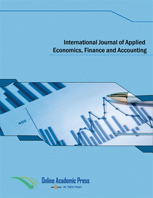COVID-19 Pandemic, Real Effective Exchange Rate and Foreign Direct Investment Inflows: Evidence from Morocco, Turkey and Egypt
DOI:
https://doi.org/10.33094/ijaefa.v12i2.543Keywords:
FDI inflows, REER volatility, Covid-19, GARCH model, ARDL model.Abstract
This paper aims to empirically study the impact of real effective exchange rate (REER) volatility in different exchange rate arrangements for the 1990–2020 period and the impact of the Covid-19 pandemic on foreign direct investment (FDI) inflows to Morocco, Turkey and Egypt. Economic growth, gross fixed capital formation, economic openness, and inflation volatility are economic quantities that also specify the model. The autoregressive conditional heteroscedasticity model was used to measure the annual volatility of REER and inflation, and the cointegration bounds test approach via the scaled lag autoregressive model. The estimation results show that FDI inflows responded negatively to real effective exchange rate volatility at the 10% level in Morocco and positively at the 1% level in Turkey at lag (2). In the short run, according to the estimation results obtained, it seems that the Covid-19 pandemic did not have a negative impact on FDI inflows at the 1% level in Morocco, and also did not significantly affect Turkey. In Egypt, the ARDL model was shown to be invalid following the validity tests performed for reasons clarified in this paper.




